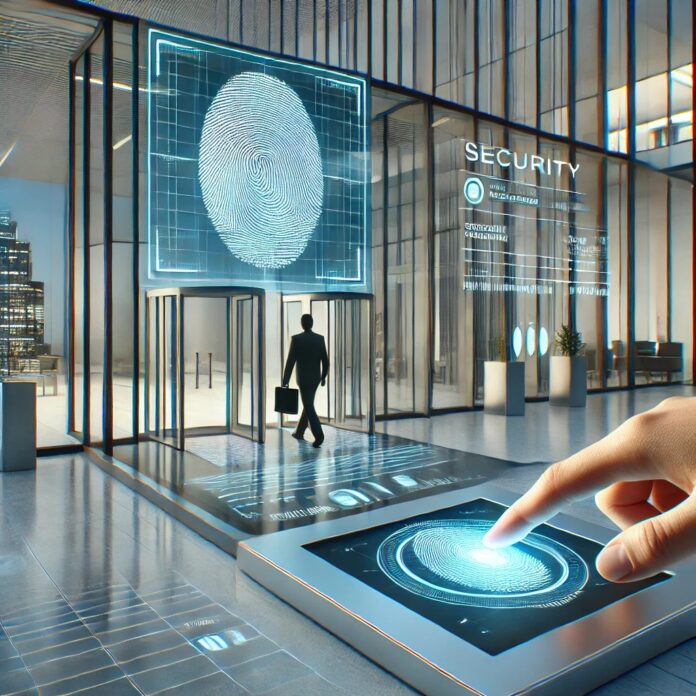Introduction to Biometric Technology
Biometric technology has rapidly become a cornerstone in modern security systems, providing robust and reliable identification and authentication methods. This technology uses unique biological traits, and iris patterns, to verify an individual’s identity. As the world becomes increasingly digital, the need for secure and convenient methods of identity verification has driven the widespread adoption of biometric systems.
Types of Biometric Technology
Fingerprint Recognition
Fingerprint recognition is one of the most common and well-established forms of technology. It involves scanning an individual’s fingerprint and comparing it to a stored template. This method is highly accurate and widely used in various applications, from unlocking smartphones to accessing secure facilities.
Facial Recognition
Facial recognition technology analyzes the unique features of a person’s face to identify them. This technology has gained popularity due to its non-intrusive nature and its ability to function even in challenging conditions. It is commonly, airport security, and social media platforms.
Iris and Retina Scanning
Iris and retina scanning are advanced biometric techniques that analyze the unique patterns in a person’s eye. These methods are extremely accurate and difficult to forge, making them ideal for high-security environments such as military bases and government facilities.
Voice Recognition
Voice recognition technology identifies individuals based on their unique vocal characteristics. It is often used in customer service applications, allowing for secure and convenient access to personal information over the phone.
Applications of Biometric Technology
Enhancing Security
One of the primary applications of technology is enhancing security. Biometric systems provide a high level of accuracy in identifying individuals, reducing the risk of unauthorized access. This technology is widely used in securing physical locations, digital devices, and online accounts.
Streamlining Access Control
Biometric technology simplifies access control by eliminating the need for traditional keys, passwords, and ID cards. Users can easily gain access to secure areas or systems using their unique biological traits, which are difficult to lose or forget.
Improving Customer Experience
Biometric technology enhances the customer experience by providing quick and convenient access to services. For example, facial recognition can expedite the boarding process at airports, and fingerprint recognition can speed up transactions at ATMs.
Supporting Healthcare
In the healthcare sector, biometric technology is used to ensure secure access to medical records, and prevent fraud. It helps streamline processes and enhances patient safety by ensuring that the right treatments are administered to the right individuals.
Advantages of Biometric Technology
High Accuracy
it offers a high level of accuracy in identifying individuals, reducing the chances of errors and unauthorized access. The uniqueness of biometric traits ensures that each person can be accurately identified.
Convenience
Biometric systems provide a convenient and user-friendly method of authentication. Users do not need to remember passwords or carry physical tokens, as their biological traits serve as their credentials.
Enhanced Security
technology significantly enhances security by providing a reliable method of identity verification. The difficulty of forging biometric traits ensures that only authorized individuals gain access to secure areas and systems.
Cost-Effectiveness
While the initial implementation of biometric systems can be costly, they offer long-term cost savings by reducing the need for physical security measures and password management.
Challenges of Biometric Technology
Privacy Concerns
One of the major challenges of biometric technology is addressing privacy concerns. The collection and storage of biometric data raise questions about how this information is used and protected. Ensuring that biometric data is securely stored and not misused is critical to gaining public trust.

Technical Limitations
Biometric technology is not without its technical limitations. Factors such as lighting conditions, physical injuries, and aging can affect the accuracy of biometric systems. Continuous advancements in technology are needed to address these limitations.
Ethical Considerations
The use of biometric technology also raises ethical considerations. The potential for misuse of biometric data, such as surveillance and discrimination, must be carefully managed through robust legal and regulatory frameworks.
The Future of Biometric Technology
The future of technology looks promising, with ongoing advancements and innovations. Integrating biometrics with artificial intelligence and machine learning can further enhance the accuracy and reliability of these systems. As technology continues to evolve, it is likely to become an integral part of our daily lives, providing secure, convenient, and efficient methods of identity verification.



